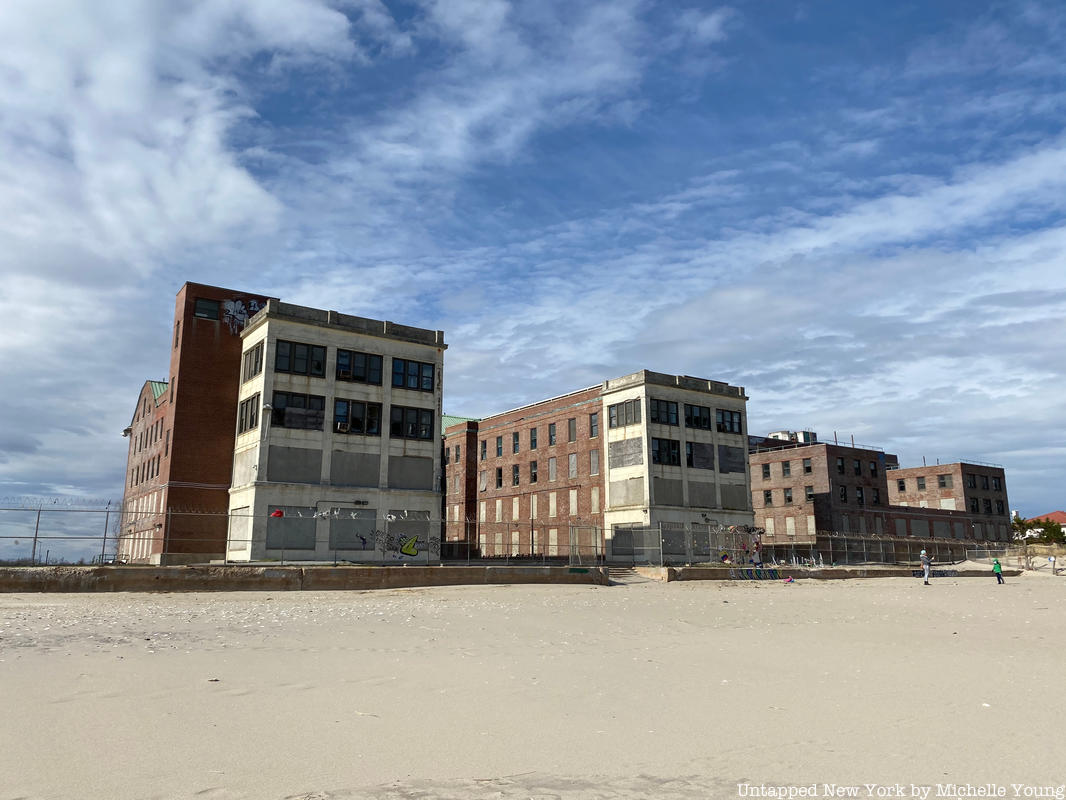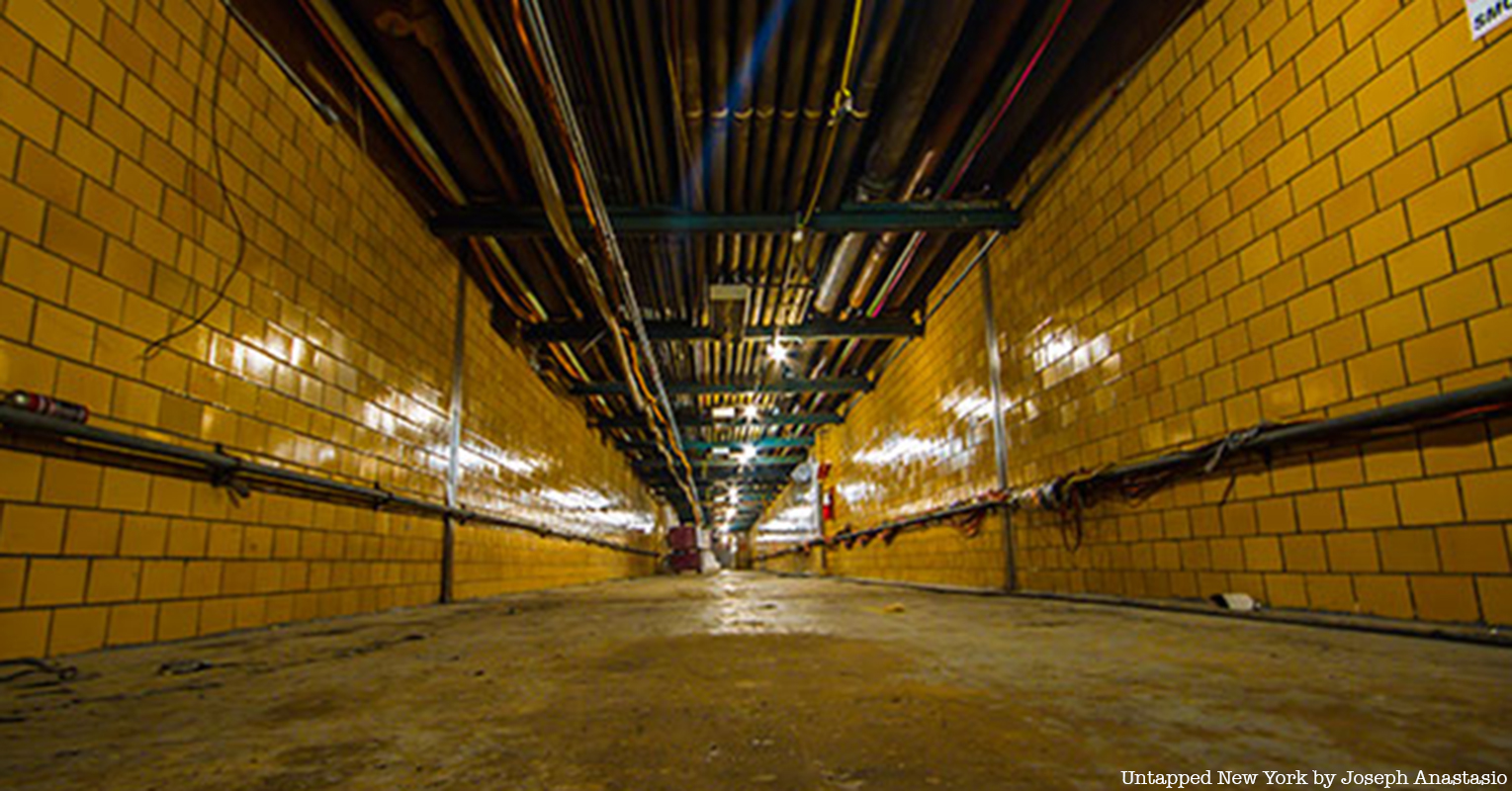
New York hospitals have begun to feel the pressure as coronavirus cases continue to grow into the tens of thousands. New York State is building temporary hospitals in four locations and converting other buildings into hospitals. Yet, it may be helpful to look back to some of New York’s now defunct hospitals that changed modern medicine and revolutionized medical practices used around the world. Some of these institutions, had they not been converted into condos and other uses, may be of use in the current fight against coronavirus.
From secret War Department research to smallpox vaccinations to a small laboratory that later became the National Institutes of Health, New York’s hospitals have cared for millions of people and have shifted our understanding of the medical world.
1. Goldwater Hospital
 Tunnels under the former Goldwater Hospital
Tunnels under the former Goldwater Hospital
On Roosevelt Island, Goldwater Hospital opened in 1939 as a “monument to the golden years of public health in New York City.” The hospital was recently demolished in early 2014, and sat where Cornell Tech exists today. At the time of its de-commissioning, Goldwater housed a nursing home and a hospital specializing in respiratory and rehabilitative medicine. Many of the building’s patients were moved to Coler Hospital on Roosevelt Island’s North End prior to the hospital’s closing.
Dr. Sigismund Schulz Goldwater, who served as health commissioner under Mayor LaGuardia, wanted to shift health care’s emphasis towards studying chronic diseases, so he opened up the hospital to engage in more longitudinal research. In the hospital’s early years, Goldwater cared for polio patients and also ran a wheelchair repair shop. Columbia and NYU operated research units at the hospital, and the War Department also conducted secret research there on malaria and human temperature tolerance. The hospital’s architecture allowed for patients to have direct access to light and fresh air.
To preserve the building’s history, architect Charles Giraudet took over 18,000 photos of each room of the hospital as well as its demolition. You can see some of his photographs on his website.





